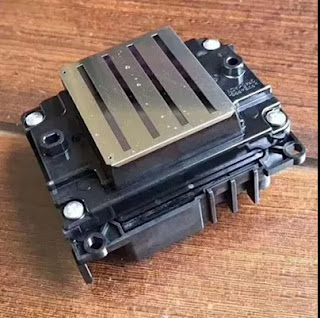Traditionally, the advantage of dye-sublimation printing has been the fact that it is a continuous-tone technology, where each dot can be any color. In contrast, inkjet printers can vary the location and size of ink droplets, a process called dithering, but each drop of ink is limited to the colors of the inks installed. Consequently, a dye-sublimation printer produces true continuous tones appearing much like a chemical photograph. An inkjet print is composed of droplets of ink layered and scattered to simulate continuous tones, but under magnification the individual droplets can be seen. In the early days of inkjet printing, the large droplets and low resolution made inkjet prints significantly inferior to dye-sublimation, but some of today's inkjets produce extremely high quality prints using microscopic droplets and supplementary ink colors, producing superior color fidelity to dye-sublimation.
Drawbacks of large format sublimation printers
Dye-sublimation printers have some drawbacks compared to inkjet printers. Each of the colored panels of the ribbons, and the thermal head itself, must match the size of the media that is being printed on. Furthermore, only specially coated paper or specific plastics can accept the sublimated ink. This means that dye-sublimation printers cannot match the flexibility of inkjet printers in printing on a wide range of media.
The dyes diffuse a small amount before being absorbed by the paper. Consequently, prints are not razor-sharp. For photographs, this produces very natural prints, but for other uses (such as graphic design) this slight blurriness is a disadvantage.
The amount of wasted dye per page is also very high; most of the dye in the four panels may be wasted for a typical print. Once a panel has been used, even to just print a single dot, the remaining dye on that panel cannot be reused for another print without leaving a blank spot where the dye was used previously. Due to the single-roll design of most printers, four panels of colored dye must be used for every print, whether or not a panel is needed for the print. Printing in monochrome saves nothing, and the three unused color panels for that page cannot be recycled for a different single-color print. Inkjet printers can also suffer from 'dye wastage' as the ink cartridges are prone to drying up with low usage (without 'heavy use', the cartridge nozzles can become clogged with dried ink). Dye-sublimation media packs, (which contain both ribbon and paper), are rated for an exact number of prints which yields a fixed cost per print. This is in opposition to inkjet printers where inks are purchased by volume.
Notices of dye-sublimation printer
For environments that print confidential or secret documents, a
dye-sublimation printer is a potential security risk that must be handled
carefully. Due to the mechanism of printing, a perfect color-separated negative
image of the printed page is created on the supply roll color panels, and the
"waste roll" of dye panels can be unrolled to see everything that has been
printed with the printer. For such environments, the waste roll should be
shredded or incinerated onsite rather than simply being discarded in the trash.
Also, for home users, the waste roll from a photo printer can be similarly
recovered from the garbage and used to see everything that has been printed.
Since the supply roll is plastic, the lifespan of a used roll can be years or
decades long, permitting image recovery long after disposal.From the above, now you can know the advantages of dye-sublimation transfer printer. If you have any other needs or questions welcome to contact us at any time. We will provide you the best quality product and service. Hope my article can be useful to you. Thank you for your reading.
Nanjing Feiyue paper Industrial Co.,ltd
www.feiyuepaper.com
Email: sales@feiyuepaper.com
jenny@feiyuepaper.com
Whatsapp: +8618755150383








没有评论:
发表评论